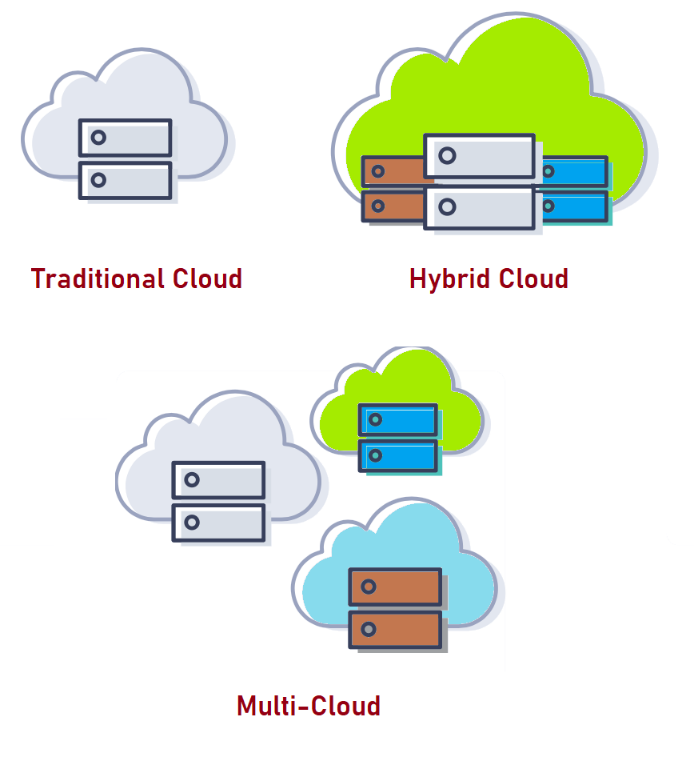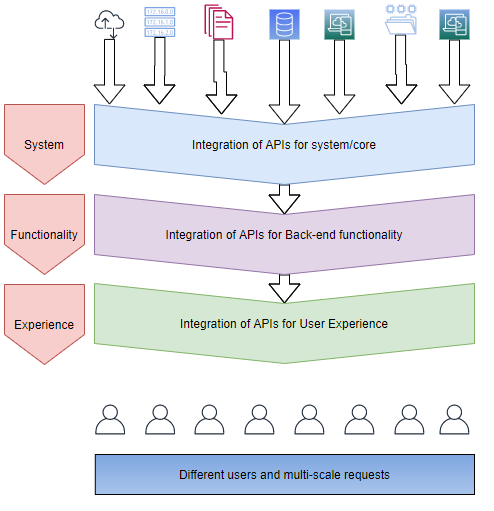By Shantanu Kaushik
In Part 1 of this series, we discussed how multi-cloud adoption can lead to challenges within different teams. We covered the challenges faced by the Operations Team, orchestrating different resources based on a distributed cloud setup. We also suggested implementing a strategy and workload distribution to overcome these challenges.
In this article, we will discuss the challenges faced by the Development, Networking, and Security teams and ways to overcome these challenges.

A multi-cloud setup is primarily used for maintaining performance and usability requirements by the application because of the evolution of application delivery models like DevOps. The Development Team faces a unique set of challenges.
The cloud opened up ways for application delivery with Containers and Microservices. DevOps SDLC made application integration and delivery more refined with a correct form of automation and practices like DevSecOps and Continuous Testing.

With cloud computing concepts, developers can focus on the application code instead of the infrastructure and resource orchestration. However, multi-cloud presents a challenge when distributed application modules or container instances load at multiple levels. We need to understand that all cloud providers that constitute the multi-cloud setup provide elastic computing resources (like Alibaba Cloud ECS), load balancers (like Alibaba Cloud SLB), and their form of container services.
The challenge is the application integration model. The multi-cloud architecture will differ from the hybrid or traditional cloud structure on some levels. Distribution of resources and application modules isolated by VPCs across multiple clouds will require standardization to operate.

The solution is to apply a standardized approach for integration, testing, and release across the clouds. Predetermined algorithms to make your application platform-independent are the biggest solutions. IAC solves a lot of such issues. Tools, such as Kubernetes and Docker, provide an open-source backed usage scenario standardized with any cloud provider you use to host your application.
With a multi-cloud setup, the dynamic pools of infrastructure can be orchestrated according to demand or influx. They may be scaled down when not required. Within the multi-cloud architecture, the infrastructure and applications require multiple services that have to be networked together to ensure reliability and maintain high-availability. The Networking Team will face multiple challenges. Let’s take a look at some of these challenges and their solutions:
The lack of static IP addresses in the cloud model makes the job of the Networking Team more complex. They need to find a way to configure all of the service updates within the distributed multi-cloud infrastructure to establish connections for proper delivery and workload execution. We need to discover and connect services without trading off infrastructure association and performance in the multi-cloud model.
Traditionally, the Networking Team defines a mapped network path just before the protection offered by a firewall. With a multi-cloud setup, the security concerns also become multi-tier on the networking side of things. This new cloud model has to work with an elastic and scaled network to ensure stability in security services for your applications and data. A multi-cloud setup makes complex network topologies for the clouds to interact based on your specific setup.
In the multi-cloud network environment, teams will have to work with service distribution to ensure proper security. By implementing such practice, you can ensure that services from one cloud can connect to the other one seamlessly and securely.
Traditionally, the data centers had a single channel network adaptation. Outside traffic was handled by the firewalls, but internal security was handled by applications and databases. Someone with an authenticated network could access the infrastructure.
With a multi-cloud setup, organizations have to take the extra step to ensure services are secure across all providers, and it is a challenge. Multi-Cloud depends on security services provided by the respective cloud providers. With a cloud setup and managed services, you do not need to worry about security within the cloud perimeters. You should think about when data is traveling between the clouds.
With a multi-cloud setup, the protection system has to expand exponentially. Here, strict control over the network is important to ensure access and authorization is maintained with identity verification. The multi-cloud infrastructure may involve multiple sites, making it difficult to filter the secured traffic to flow into a network and block the insecure.
The most important challenge for the Security Team is to establish a core assumption for security practices that revolves around the network configurations used to connect the Development and Operations Teams. There must be a new strategy for these teams to adopt a multi-cloud setup as the basis of their new application workloads.
The multi-cloud infrastructure-based security teams will have to build a trust model to ensure secure access for the system, application access, and identity management. Identity and Access Management solutions are established mostly in the daily execution of an organization. You need to ensure that identity and access management solutions, such as Alibaba Cloud RAM, reach the application and resources.
Sensitive data has to be protected at all costs. Alibaba Cloud provides Sensitive Data Discovery and Protection to help you work with sensitive data without worrying about privacy and leakage. This solution is easily accessible inside the network. While adopting multi-cloud, you need to have a clear network configuration in place that lets you protect sensitive data.
You must maintain application security during the delivery process in the multi-cloud model. The Security Teams must work with the Development and Operations Teams to incorporate practices at every stage to apply the concepts of DevSecOps and party DataOps.
The Security Team has to ensure the data encryption associated with application data in both states, i.e., at-rest and during delivery. They have to ensure that security does not interfere in normal data delivery and the overall solutions can still maintain the prescribed velocity.
The growth of multi-cloud has been escalated by containerization with Kubernetes or Docker. A multi-cloud setup incorporates different cloud solutions that are based on different software environments. As a result, organizations can continue to leverage their applications to support their businesses within a multi-cloud environment. This enables them to access data and resources across environments without causing any issues with integration scenarios.
Alibaba Cloud Container Service for Kubernetes (ACK) runs alongside IAC-Terraform to manage and deploy these containerized applications. It is a highly effective tool to automate deployment scenarios, scale, and manage containers panning clusters across a multi-cloud setup.
Containerization is the key to solving a lot of multi-cloud adoption woes since you can easily isolate your applications from the base environment and provide configurations independently.
A Guide to Overcoming Multi-Cloud Adoption Challenges – Part 1
Excellence in Deliverance with Elastic Computing: Alibaba Cloud Elastic Compute Service – Part 1

2,598 posts | 770 followers
FollowAlibaba Clouder - February 13, 2021
Alibaba Clouder - March 11, 2021
Dassie - March 1, 2023
Alibaba Clouder - March 8, 2021
PM - C2C_Yuan - July 22, 2020
Alex - June 21, 2019

2,598 posts | 770 followers
Follow DevOps Solution
DevOps Solution
Accelerate software development and delivery by integrating DevOps with the cloud
Learn More Accelerated Global Networking Solution for Distance Learning
Accelerated Global Networking Solution for Distance Learning
Alibaba Cloud offers an accelerated global networking solution that makes distance learning just the same as in-class teaching.
Learn More Alibaba Cloud Flow
Alibaba Cloud Flow
An enterprise-level continuous delivery tool.
Learn More Networking Overview
Networking Overview
Connect your business globally with our stable network anytime anywhere.
Learn MoreMore Posts by Alibaba Clouder
Start building with 50+ products and up to 12 months usage for Elastic Compute Service
Get Started for Free Get Started for Free